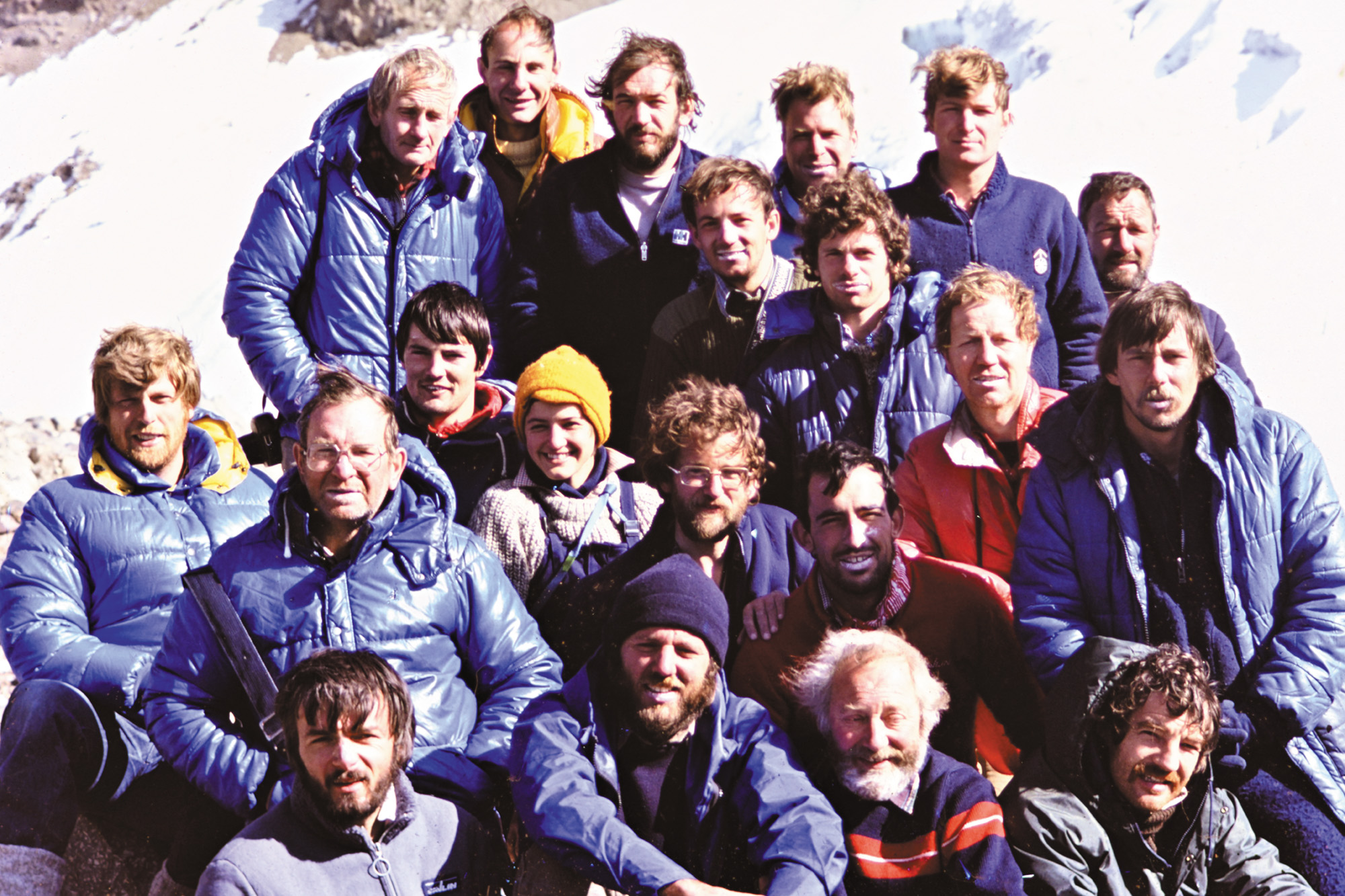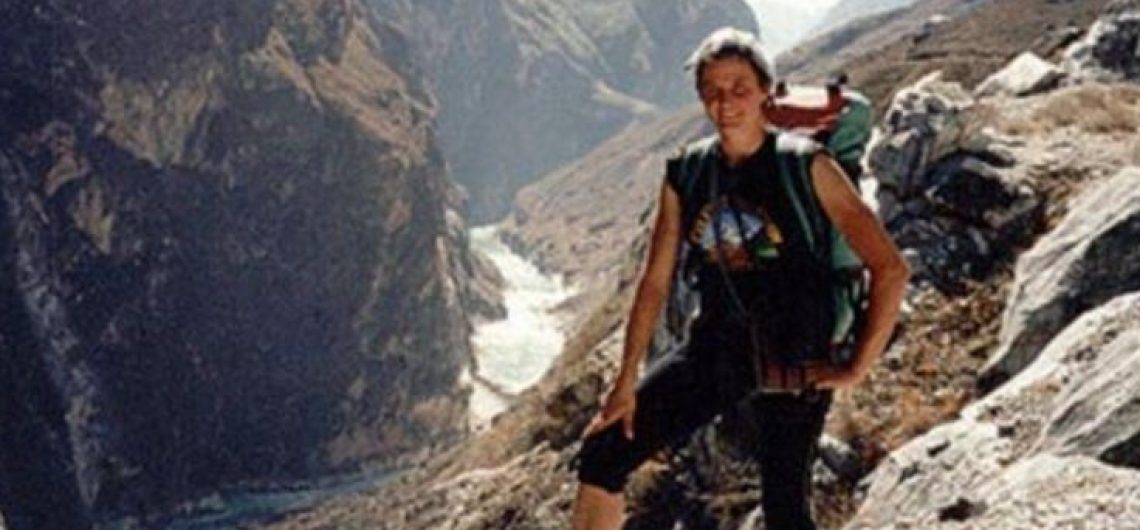On October 24, 1999, Ginette Harrison passed away in an avalanche on Dhaulagiri I, which is located in Nepal and is 26,795 feet high. 41 was Harrison’s age. On the upper peak, Harrison, a surgeon and climber who had climbed at least four eight thousand-meter summits, was murdered together with a Sherpa climbing companion. Harrison’s death occurred on the upper mountain. Gary Pfisterer, Harrison’s American husband, was heading the 11-person climbing team that was participating in the Dhaulagiri trip. Harrison, who was originally from the United Kingdom, had recently relocated to Massachusetts with her husband. At the time, Harrison was considered to be among the most powerful female climbers in the entire globe. Up to the time of her passing, she had the distinction of being the first woman to climb Kangchenjunga, which is 28,170 feet high, and survive the descent.
One of the most accomplished female mountaineers in the world, a British woman, was killed in an avalanche.
She climbed Everest in 1993, Cho Oyu in 1997, Kangchenjunga (first female ascent) and Shisha Pangma Central-Peak in 1998 and Makalu in 1999.
Ginette Harrison, a British general practitioner who turned out to be the first woman to ascend the world’s third highest mountain, was swept to her death while attempting to scale Nepal’s hazardous Dhaulagiri I, which is the seventh highest peak. Harrison was 41 years old.
Her American husband, Gary Pfisterer, who was also the expedition leader, was the one who delivered the news of her passing. He did this by using a satellite phone to get in touch with the head of the organization that was in charge of the trip. “We lost Ginette,” he confided in Murari Sharma.
They were climbing the distant 8,167-meter peak alongside an expedition from France. The eleven-person team consisted of climbers from the United States of America, the United Kingdom, and Austria.
Despite the fact that the specifics of the disaster are yet unknown, members of the French team, who were transported by helicopter back to Kathmandu, the capital of Nepal, yesterday, stated that the catastrophe took place on Sunday at an altitude of around 6,500 million feet.
The climbers who were at the head of the group ignited a little fall consisting of rock and snow that was no more than a few centimeters in height. When it finally reached Ms. Harrison, which was fifty meters below the surface, it had already amassed such a great deal of weight and momentum that it carried her and a Nepalese sherpa away.
The remaining members of the group watched in terror as the two individuals were thrown down the slope of the mountain. A search for the bodies that lasted for forty-eight hours was futile, despite the fact that the other climbers were able to observe the location where they had been transported by the avalanche.
Douglas and Brenda Harrison, Ms. Harrison’s parents, received the news of their daughter’s passing on Tuesday evening through a phone call from the mountain. Mr. Pfisterer, who is still in base camp and is not anticipated to return to Kathmandu for many days, made the call from the mountain.
Today, Mr. and Mrs. Harrison paid homage to their daughter while speaking from their residence in Saltash, Cornwall, which is located in Cornwall.
“We always knew the risks but she had climbed the most dangerous mountains and survived,” Mrs. Harrison remarked to reporters. “She was always very careful and level-headed, but in a sport like climbing, danger is always around the corner,” the speaker said.
“Although it is true that she lived for the mountains, the fact that she passed away there does not make it any less difficult. She had a good deal of reasons to live. It was because she was such a compassionate and caring person that she decided to pursue a career in medicine. But climbing was her first and foremost goal in life. At all times, she pushed herself to an even greater extent. He will be greatly missed by all of us.
Mountaineering for women has suffered a tremendous blow as a result of her passing. Over the course of the past seven years, a string of unfortunate events has resulted in the passing of other prominent figures in the sport. One of these individuals was fellow British athlete Alison Hargreaves, who passed away on K2, the second highest peak in the world, in the year 1995.
An avalanche struck the tent that French mountaineer Chantal Mauduit was staying in on Dhaulagiri I in May of the previous year, resulting in her death.
Even though she was relatively unknown in her own country, Ms. Harrison had reached five of the fourteen peaks in the world that were higher than 8,000 meters, including Everest in 1993. She had also scaled the highest peaks on all seven continents throughout her lifetime.
During that journey, she became acquainted with Mr. Pfisterer, and the pair went on to be married and establish their home in Monson, Massachusetts, in the previous year. It was planned that the couple, who did not have any children, would make an attempt on K2 the following year.
The previous year, Ms. Harrison highlighted her status as the best by being the first woman to reach the peak of Kangchenjunga, which is the third highest mountain in the world at an elevation of 8,568 meters.
According to individuals who knew Ms. Harrison, both she and her husband were aware of the hazards that were involved in the climb. However, four women who had tried the climb in the past had been slain.
Jonathan Pratt, who accompanied Ms. Harrison on the Kangchenjunga trip, remarked that she was the most accomplished female Himalayan climber of her generation. In spite of the fact that she had a very pleasant style, was rather timid, and was easygoing, she was actually a very harsh character. However, it was only when things became difficult that her tenacity and resolve were shown.
Ginette lived her life like a tiger, yet she was always very humble and modest about her accomplishments, according to Clive Hughes, a close friend and fellow climber. When she returned from the most amazing and arduous climbs, she would comment that it was really delightful, like if she had been out for a stroll in the park in the afternoon.
He continued by saying, “The true tragedy would have been if she had died as a result of falls from her bicycle.” At the very least, she was engaged in the activity that she cherished the most in the entire world.
The national officer of the British Mountaineering Council, Andy MacNae, expressed his sentiments by saying, “This is a huge loss.” Ginette was a climber who was well regarded, who left a significant mark on younger climbers, and who served as a significant source of motivation for women all around the world.
It was the mountain that they said could not be climbed.
Dhaulagiri, which stands at 8,167 meters and is the seventh highest mountain in the world, is a secluded white monster that can be seen from more than 60 kilometers to the north-west from the picturesque hill town of Pokhara, which is located in western Nepal.
An all-star French expedition commanded by Maurice Herzog investigated the region for the first time in 1950. They were confused whether to climb it or its neighbor Annapurna, which is the mountain that is located nearby. It was then that they came to the conclusion that Dhaulagiri, which translates to “White Peak” in Sanskrit, was not only excessively high and intimidating, but there was also no visible path up to its peak.
While speaking to his captain, Lionel Terray stated, “I will not set foot on this mountain.” “No one will ever climb Dhaulagiri.”
It is located near the head of the Kali Gandaki, which is the deepest gorge in the world. Because of its isolated location, it is a magnet for poor weather, which causes it to dump unusual amounts of snow on its top slopes. However, Terray was incorrect, and in 1960, a Swiss expedition was the first to successfully climb the peak. This came after a series of expeditions had attempted to climb the mountain, which resulted in the loss of two lives.
A significant elevation gain of 11,000 feet is achieved by the majority of expeditions by following the Swiss path of climb up the north-east ridge. In recent years, as a consequence of the trend for collecting the 14 summits that are higher than 8,000 meters, Dhaulagiri has been scaled more frequently. However, despite this, it continues to be an uncomfortable and tough peak that very few mountaineers endeavor to climb for its own purpose.
The climbing season in Nepal during the autumn of this year has been one of the worst on record, with snowfall quantities that are abnormally high. A great number of trips have been abandoned in the mountains, and there have been a number of deadly tragedies that have occurred as a result of avalanches.
In the past several years, weather patterns in mountain ranges all around the world have changed, probably as a result of global warming. This has resulted in situations that are not well understood. The traditional climbing regions of the United Kingdom are being abandoned by British climbers in favour of ranges where the weather is more reliable, such as Greenland.
The peaks she climbed over the years
- Mount Kenya (1982, 1994)
- Denali (1983)
- Aconcagua (1990)
- Mount Kosciuszko (1991)
- Everest (1993)
- Mount Elbrus (1994)
- Kilimanjaro (1994)
- Puncak Jaya (1994)
- Mount Logan (1995)
- Mount Vinson (1995)
- Eyes of the Salado (1995)
- Cho Oyu (1997)
- Kangchenjunga (1998)
- Shishapangma (1998)
- Makalu (1999)
She is seen below with colleagues climbing Mount Kenya
 Top row: left to right. Ian Green, Alex Wright, Neville Richardson, David Parker, David Milles, Neil Smith John Milles, John Simmons. Middle row: Bernard Coles, Ron Fletcher, Tim Harlow, Ginette Harrison, Tim Harvey, Simon Morrissey, Norman Dorricott, Norman Waterhouse. Front row: Jo Bradwell, Ian Chesner, Frank Davies, Gron Jones.
Top row: left to right. Ian Green, Alex Wright, Neville Richardson, David Parker, David Milles, Neil Smith John Milles, John Simmons. Middle row: Bernard Coles, Ron Fletcher, Tim Harlow, Ginette Harrison, Tim Harvey, Simon Morrissey, Norman Dorricott, Norman Waterhouse. Front row: Jo Bradwell, Ian Chesner, Frank Davies, Gron Jones.
![]()


Comments